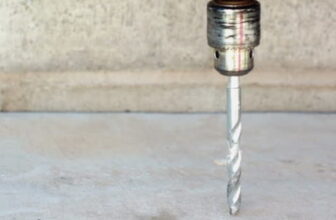New woodworkers may have plenty of questions when it comes to essential hand tools. Here, we provide a concise list of the fundamentals – so newcomers can learn and progress without having to depend too heavily on specialized equipment. Specialty tools are valuable but mastering basic tool skills is key for beginning woodworking projects.
Finding the right tools to start your woodworking projects can be challenging – especially for newcomers. This guide simplifies that process by offering five fundamental hand tool recommendations essential to amateur carpentry tasks. Equip yourself with these basic implements and you’ll soon find yourself conquering those beginner-level crafting challenges without any trouble!
Five fine woodworking hand tools
Setting up a shop can be overwhelming, especially for a beginner. That’s why we stock a range of fine woodworking hand tools to provide you with the perfect starter kit. The right quality of instruments is essential to creating furniture and other items competently and safely — every component in our collection is selected with care and passed through multiple rounds of rigorous quality checks, meaning it can support all your projects. So take advantage of our carefully compiled selection! By procuring these top-notch tools, you’ll be well on your way to walking down a successful path of wood-crafting masterpieces.
Woodworking Planes
Woodworking planes are essential tools for any woodworker. They come in a variety of sizes and shapes, but all serve the same purpose: to make precise cuts in wood. There are several types of planes available, from block planes to shoulder planes and more. Each type has its own unique features that can help you achieve different results when cutting or shaping your workpiece. Many planes are adjustable, allowing you to fine-tune the depth of your cut so that it’s just right for the job at hand. With the right plane and some practice, you can achieve smooth, precise cuts every time. Here are some of the most common types of woodworking planes, as well as their uses and features.
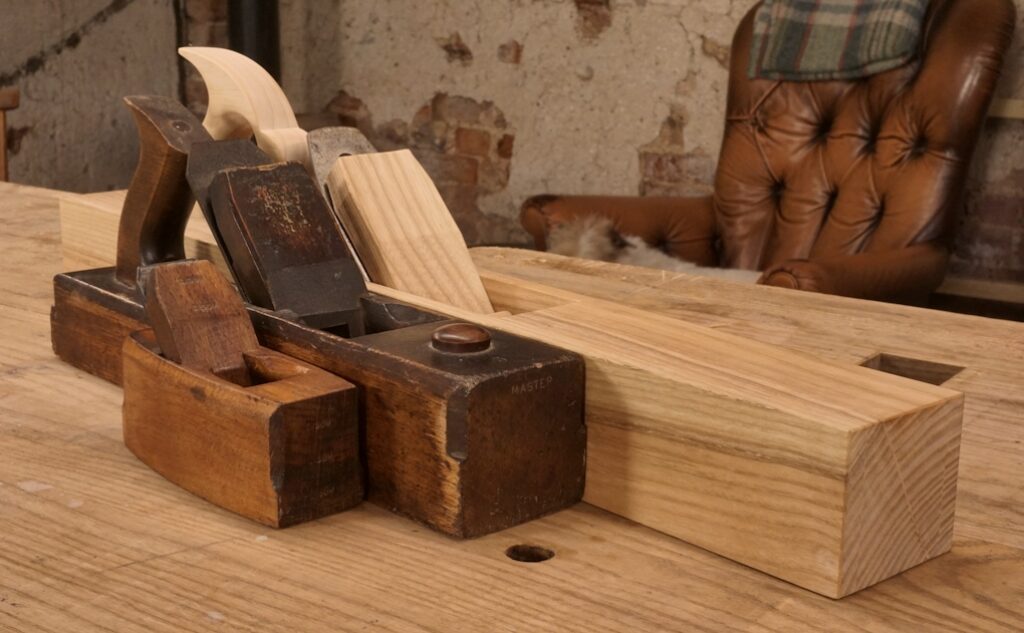
Block Planes
Block planes are small, lightweight hand planes that have a low angle blade for making fine cuts in softwoods. They’re designed to be used one-handed and are great for trimming end grain or creating chamfers and miters. The low angle of the blade helps to minimize tear-out on the wood surface.
Shoulder Planes
Shoulder planes are larger than block planes, with a longer body for added stability. They’re designed to be used two-handed and feature an adjustable mouth that allows you to make fine adjustments to the width of a cut. Shoulder planes are ideal for trimming tenons, rabbets and other joinery needs.
Router Planes
Router planes are designed to cut grooves or dadoes in wood. They feature a flat base with an adjustable depth stop and a curved cutting edge which is perfect for creating smooth, even cuts. The router plane can also be used for cleaning up edges and removing material from narrow spaces.
Jack Planes
Jack planes are large hand planes that have an adjustable mouth and longer body than block or shoulder planes. They’re great for flattening boards or planing down joints quickly and accurately. The wide blade allows you to make deep cuts while still maintaining control over the finished product.
Spokeshaves
Spokeshaves are small, hand-held tools designed for shaping curves in wood. They come in two varieties, with either a fixed or adjustable blade. The adjustable blade type is great for creating deep or shallow curved cuts and the fixed blade type is best for making shallow cuts and smoothing out rough edges.
Using these various types of planes can make all the difference when it comes to achieving precise results on your next project. With a little practice, you’ll be able to use them like a pro! So, don’t be afraid to pick up a few and give them a try. You just might find that they become an essential part of your arsenal in no time.
Saws
A woodworking hand saw is an essential tool for all those involved in carpentry and construction. It can be used to make precise cuts in a variety of materials, from thin pieces of plywood to thick boards. Hand saws are available in a wide range of sizes, shapes, and styles so you can choose the one that best suits your needs. The blade of a hand saw is made from high-quality steel that has been sharpened for precision cutting, and the handle is usually ergonomically designed for comfortable use. Hand saws also come in different tooth configurations such as rip, crosscut and combination blades to help you make accurate cuts in any type of material. With regular maintenance, a quality woodworking hand saw will last you many years, making it an excellent investment for your projects.
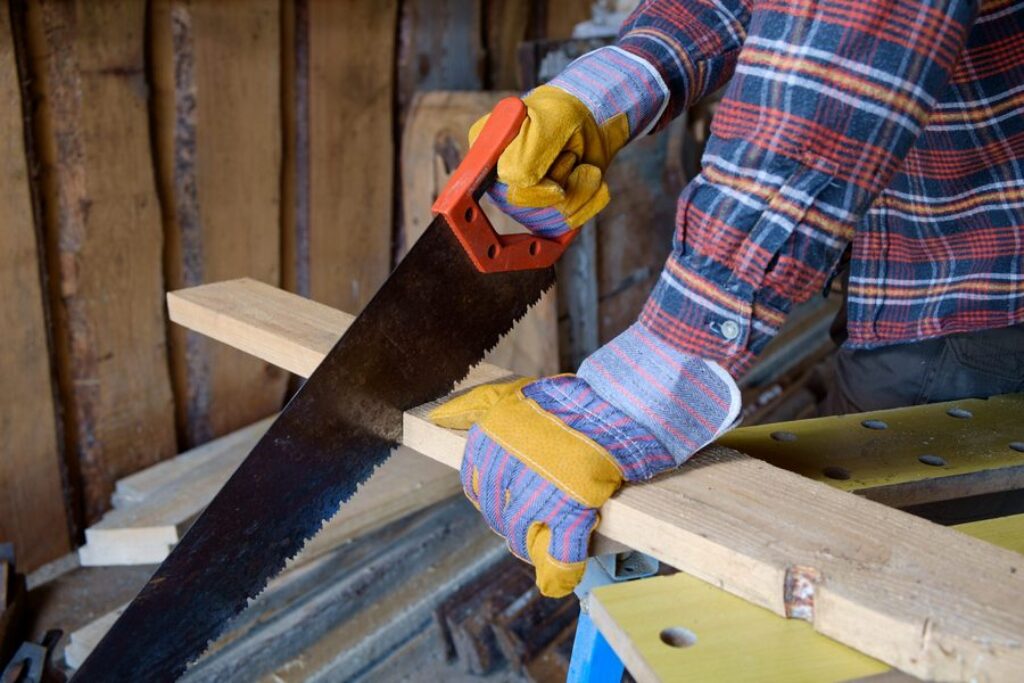
There are main types of hand saws that are commonly used in carpentry and other woodworking projects:
- Back saws – These are the most common type and usually have a reinforced spine to provide extra rigidity while making cuts. They come in both straight and curved blade models, depending on the type of cut you need to make.
- Coping saws – This is an ideal choice for cutting intricate shapes as it features a narrow frame with blades that can be manipulated at various angles. It is also great for creating curves, circles, or beveled edges.
- Tenon saws – Designed specifically for cutting mortise and tenons, this type of hand saw has a very thin blade and excellent control when making cuts in tight corners.
Woodworking hand saws are essential tools for anyone involved in carpentry and construction. With a wide range of sizes, shapes and styles available, you are sure to find the right tool for your project. Make sure to follow maintenance guidelines so that your saw can last for a long time. With proper use, it will be an invaluable asset to your woodworking kit!
Drilling
A hand drill is a tool that can power many different kinds of drilling and driving tasks. It is a versatile, cordless tool with several different interchangeable accessories so it can be used in a variety of materials, whether they are wood, plastic, or metal. With its compact size and lightweight design, the hand drill makes it convenient to take anywhere. You can also adjust the speed settings for different types of drilling needs – from light duty jobs to heavy-duty ones. The hand drill is ideal for those who need to do a lot of drilling without having to set up bulky machinery.
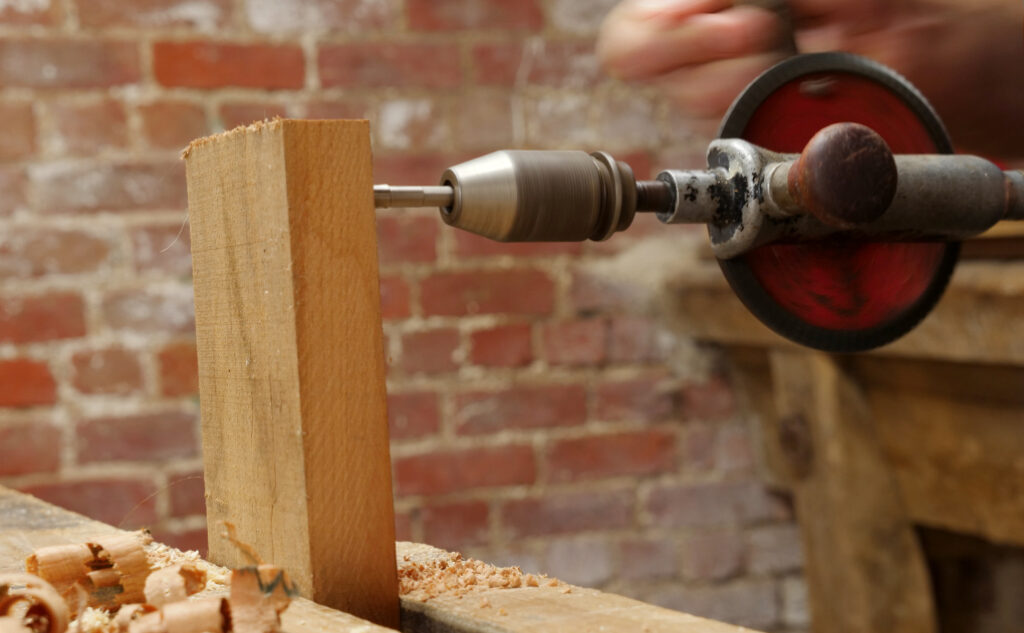
Additionally, when combined with the right attachments and bits, you can use your hand drill for more than just routine drilling jobs – such as sanding or buffing. With the right bit, you can even use it for polishing off your projects. Hand drills are essential power tools for any DIYer’s toolbox! They’re great for quick tasks, repairs, and more complex construction jobs alike. Use a hand drill to make your drilling and driving easier, faster, and more efficient!
- 1/4 and 3/8-inch Jennings pattern bits: about 90% of your mortise work can be handled with these two sizes. All draw boreholes and pegs will also be tackled by these choices.
- 10-inch swing brace: this hand tool is able to take care of almost every drilling work from its 1/4-inch small going up to 2-inch wide bits.
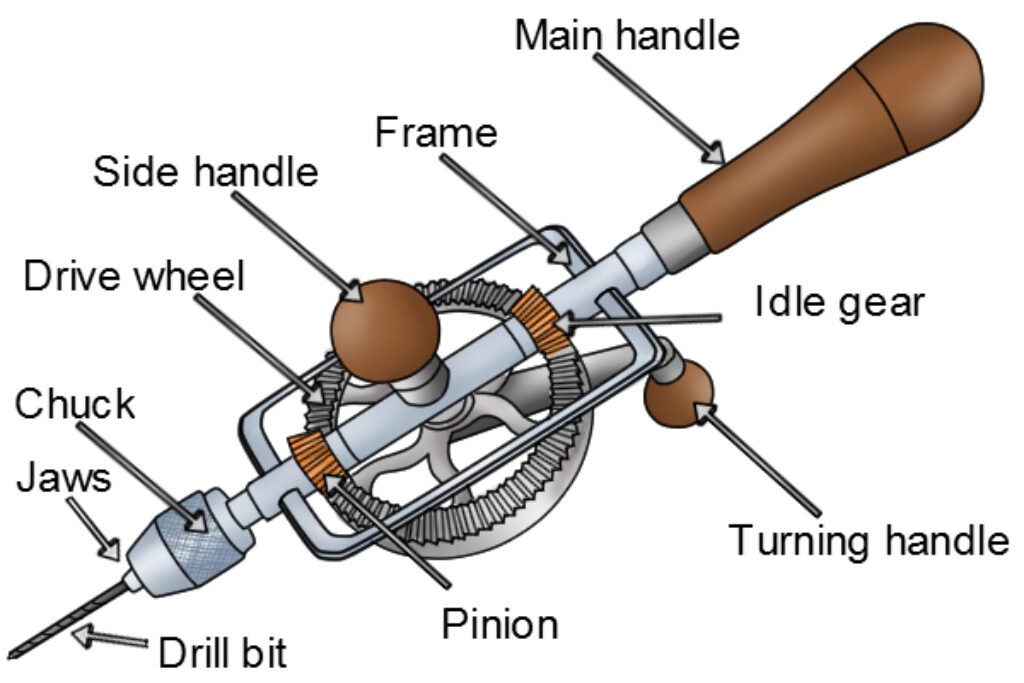
Marking
Marking tools are essential for accurately measuring and marking out the dimensions of a project. They are used to measure the width, thickness, and length of pieces of wood, as well as mark cutting lines and other measurements. A common set of tools includes a tape measure, chisels, squares, rulers, and calipers.
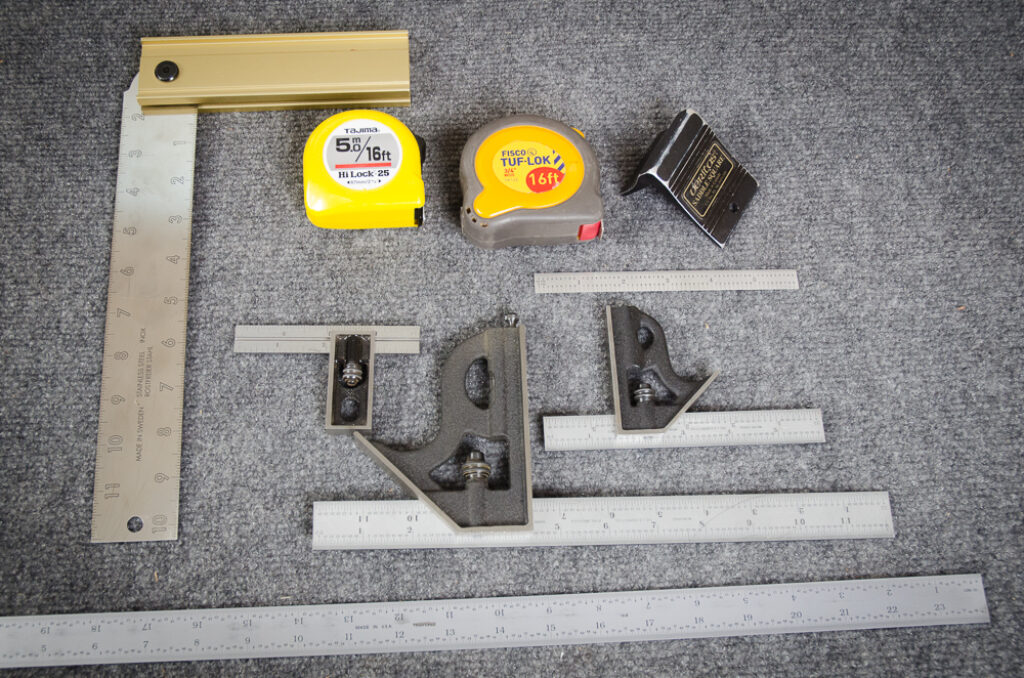
Here are some of the most popular woodworking marking tools:
Tape Measures – This simple tool measures length with a retractable cloth or flexible plastic tape. It is used to measure lengths of materials up to 25 feet and is one of the most versatile measuring tools in any shop.
Squares – Squares are used to make sure that pieces of a wood line up at right angles during assembly, and they can also be used to mark straight lines and angles. Common types of squares include framing, try speed, and combination squares.
Rulers – A ruler is a flat metal or wooden bar with markings that are used for measuring distances. They come in different sizes and styles such as inch, metric or folding rulers.
Calipers – Calipers measure the inside and outside dimensions of objects by using two separate arms connected together at one end. This tool can be used to precisely measure wood thicknesses up to 1/10th of an inch.
These are just some of the many woodworking marking tools available on the market today. With these tools, you will be able to accurately measure and accurately mark out your projects with ease!
Chisels
Woodworking chisels are essential in a wide range of woodworking projects. They come in various shapes, sizes, and materials to suit different tasks. Chisels can be used for cutting, shaping, carving, paring, and more. To get the best results from your chisel it is important to select the correct size and shape for the task at hand. It is also important to maintain your tools properly; sharpening them regularly will ensure better results with less effort expended than using blunt or damaged tools. Additionally, ensuring that you have a quality set of chisels is essential—well-made chisels will last longer, perform better, and are easier to sharpen than cheaper alternatives.
- 5 – 2-inch wide paring chisels: defining the edges of joints will definitely need a wide chisel. General chamfering and peeling off debris from the saw are other uses.
- 1/8, 1/4, 3/8, and 1/2-inch chisels will definitely serve numerous purposes for any woodworker in the shop. For use in 30-degree angles, these chisels should be sharpened.
- Mallet: the round-styled carving mallet s a great choice but the conventional cabinetmaker square-faced mallet will also work fine.
Finally, practicing proper safety protocols when working with chisels is highly recommended; wearing goggles, gloves and appropriate clothing can help to ensure that you stay safe while woodworking. By following these basic tips and selecting the right tool for the job, your woodworking chisels will become indispensable in any workshop!




